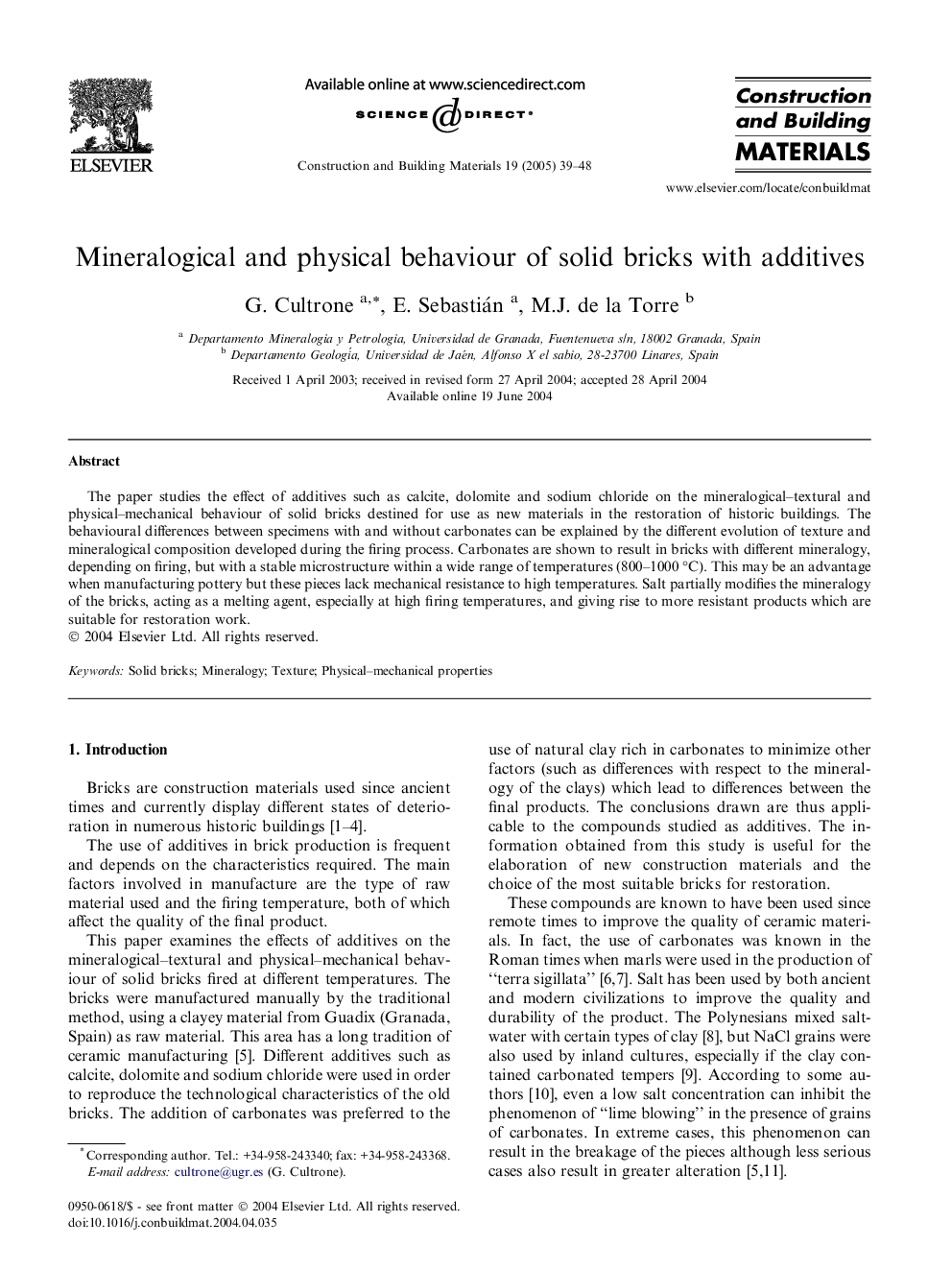| Article ID | Journal | Published Year | Pages | File Type |
|---|---|---|---|---|
| 10285596 | Construction and Building Materials | 2005 | 10 Pages |
Abstract
The paper studies the effect of additives such as calcite, dolomite and sodium chloride on the mineralogical-textural and physical-mechanical behaviour of solid bricks destined for use as new materials in the restoration of historic buildings. The behavioural differences between specimens with and without carbonates can be explained by the different evolution of texture and mineralogical composition developed during the firing process. Carbonates are shown to result in bricks with different mineralogy, depending on firing, but with a stable microstructure within a wide range of temperatures (800-1000 °C). This may be an advantage when manufacturing pottery but these pieces lack mechanical resistance to high temperatures. Salt partially modifies the mineralogy of the bricks, acting as a melting agent, especially at high firing temperatures, and giving rise to more resistant products which are suitable for restoration work.
Related Topics
Physical Sciences and Engineering
Engineering
Civil and Structural Engineering
Authors
G. Cultrone, E. Sebastián, M.J. de la Torre,
